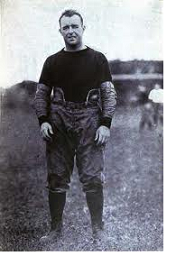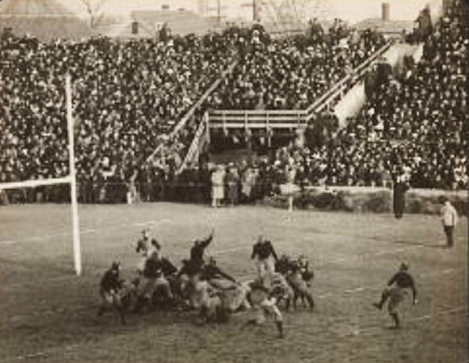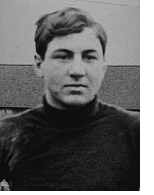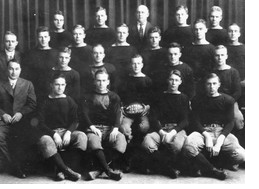 Harvard had previously won MNCs in 1901, 1908, and 1910.
Hall of Famer Percy Haughton was their coach for the last two, and I
covered him in the 1908 piece. 1912 gives him the hat trick, and he's
not done yet.
Harvard had previously won MNCs in 1901, 1908, and 1910.
Hall of Famer Percy Haughton was their coach for the last two, and I
covered him in the 1908 piece. 1912 gives him the hat trick, and he's
not done yet.Harvard had a down year in 1911, finishing 6-2-1, but their freshman team swept opponents away like a hurricane that Fall. Well, in 1912 those freshmen were sophomores, and they hit the varsity team like nitrous oxide hitting an engine. Half of Harvard's starting lineup in 1912 came from that freshman team, and they would go 25-0-2: 9-0 this year, 9-0 in 1913, and 7-0-2 as seniors in 1914. The best of these new players was halfback Charles Brickley (pictured at left), the undeniable star of this 1912 team.
Brickley was the heart of the offense, a bruising runner who did the bulk of his work right into the line, but he became most famous as one of the greatest drop-kickers of his time.


 I covered 1911 Penn State's 8-0-1 MNC contender in my 1911 national championship
I covered 1911 Penn State's 8-0-1 MNC contender in my 1911 national championship I last summarized a Wisconsin team in my 1901 national championship article
I last summarized a Wisconsin team in my 1901 national championship article